
The wire-crested thorntail is a hummingbird in the "coquettes", tribe Lesbiini of subfamily Lesbiinae. It is found in humid forests in the Andean foothills of Colombia, Ecuador, Peru, and possibly Bolivia.

The magenta-throated woodstar is a species of hummingbird in tribe Mellisugini of subfamily Trochilinae, the "bee hummingbirds". It is found in Costa Rica and Panama.

The violet-tailed sylph is a species of hummingbird in the "coquettes", tribe Lesbiini of subfamily Lesbiinae. It is found in Colombia and Ecuador.

The purple-throated woodstar is a species of hummingbird in tribe Mellisugini of subfamily Trochilinae, the "bee hummingbirds". It is found in Colombia, Ecuador, and Panama.

The amethyst woodstar is a species of hummingbird in tribe Mellisugini of subfamily Trochilinae, the "bee hummingbirds". It is found in every mainland South American country except Chile and Uruguay and has been recorded as a vagrant on Trinidad.

The Santa Marta woodstar is a species of hummingbird in tribe Mellisugini of subfamily Trochilinae, the "bee hummingbirds". It is endemic to Colombia.
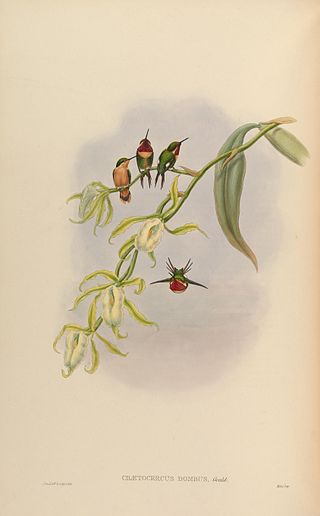
The little woodstar, called estrellita chica in South America, is a Near Threatened species of hummingbird in tribe Mellisugini of subfamily Trochilinae, the "bee hummingbirds". It is found in Colombia, Ecuador and Peru.

The gorgeted woodstar is a species of hummingbird in tribe Mellisugini of subfamily Trochilinae, the "bee hummingbirds". It is found in Colombia, Ecuador, and Venezuela.

The white-bellied woodstar is a species of hummingbird in tribe Mellisugini of subfamily Trochilinae, the "bee hummingbirds". It is found in Bolivia, Colombia, Ecuador, and Peru.

The rufous-capped thornbill is a species of hummingbird in the "coquettes", tribe Lesbiini of subfamily Lesbiinae. It is found in Bolivia, Ecuador, and Peru.
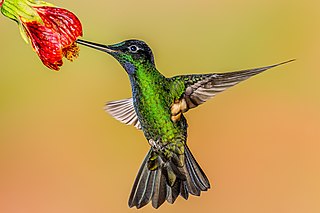
The buff-winged starfrontlet is a species of hummingbird in the "brilliants", tribe Heliantheini in subfamily Lesbiinae. It is found in Colombia, Ecuador, and Peru.
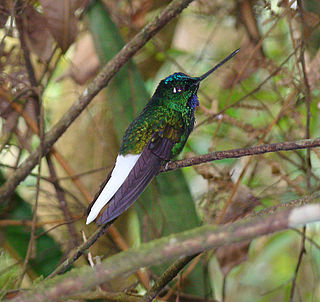
The white-tailed starfrontlet is a species of hummingbird in the "brilliants", tribe Heliantheini in subfamily Lesbiinae. It is endemic to the Sierra Nevada de Santa Marta of northeastern Colombia.
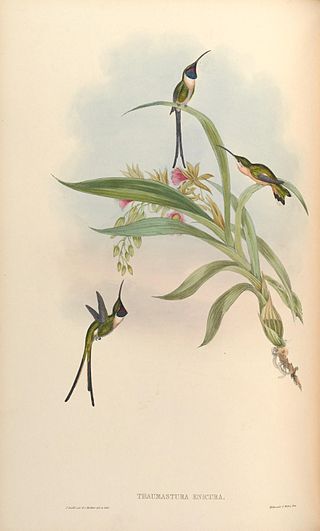
The slender sheartail is a species of hummingbird in tribe Mellisugini of subfamily Trochilinae, the "bee hummingbirds". It is found in El Salvador, Guatemala, Honduras, and Mexico.

The Chilean woodstar is a Critically Endangered species of hummingbird in tribe Mellisugini of subfamily Trochilinae, the "bee hummingbirds". It is the only species placed in the genus Eulidia. It is endemic to Chile though there are unconfirmed reports from southern Peru. The species' name commemorates the English naturalist William Yarrell.

The scaled metaltail is a species of hummingbird in the "coquettes", tribe Lesbiini of subfamily Lesbiinae. It is found in Bolivia and Peru.
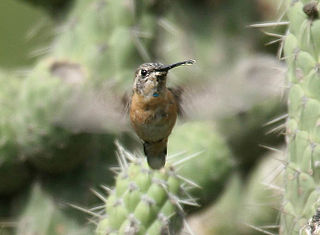
The purple-collared woodstar is a species of hummingbird in tribe Mellisugini of subfamily Trochilinae, the "bee hummingbirds". It is found in Ecuador and Peru.

The wedge-tailed hillstar is a species of hummingbird in the "coquettes", tribe Lesbiini of subfamily Lesbiinae. It is found in Argentina and Bolivia.
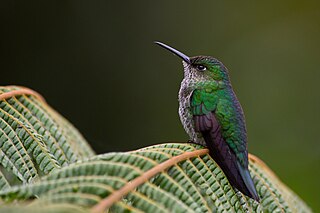
The many-spotted hummingbird is a species of hummingbird in the "emeralds", tribe Trochilini of subfamily Trochilinae. It is found in Bolivia, Colombia, Ecuador, Peru, and possibly Argentina.
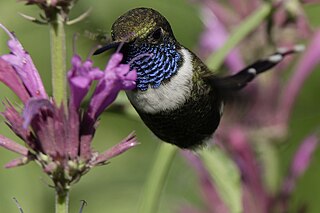
The sparkling-tailed woodstar, also known as the sparkling-tailed hummingbird, is a species of hummingbird in tribe Mellisugini of subfamily Trochilinae, the "bee hummingbirds". It is the only species placed in the genus Tilmatura. It is found in El Salvador, Guatemala, Honduras, Mexico, and Nicaragua.
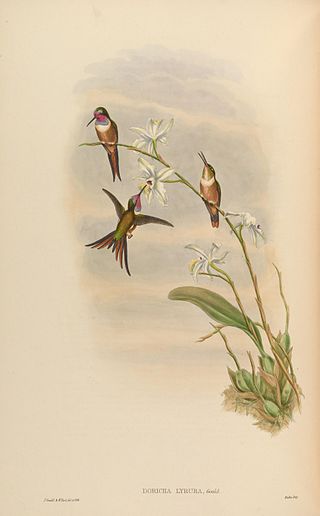
The Inagua woodstar, also called the lyre-tailed hummingbird, is a species of hummingbird in tribe Mellisugini of subfamily Trochilinae, the "bee hummingbirds". It is endemic to the two islands of the Inagua district of the Bahamas.























